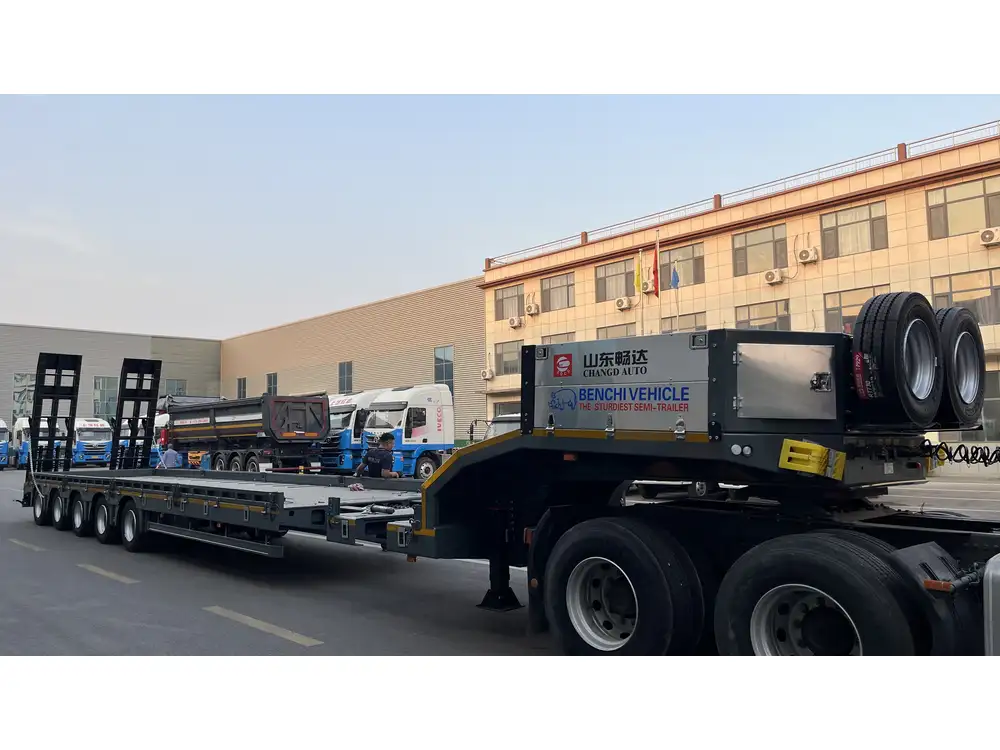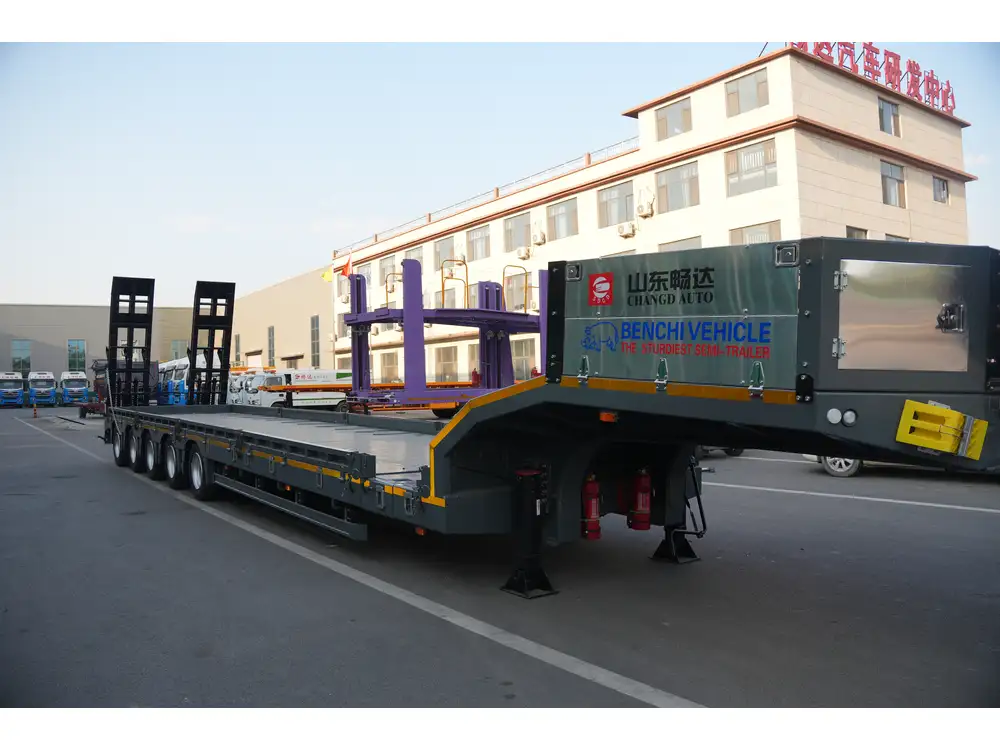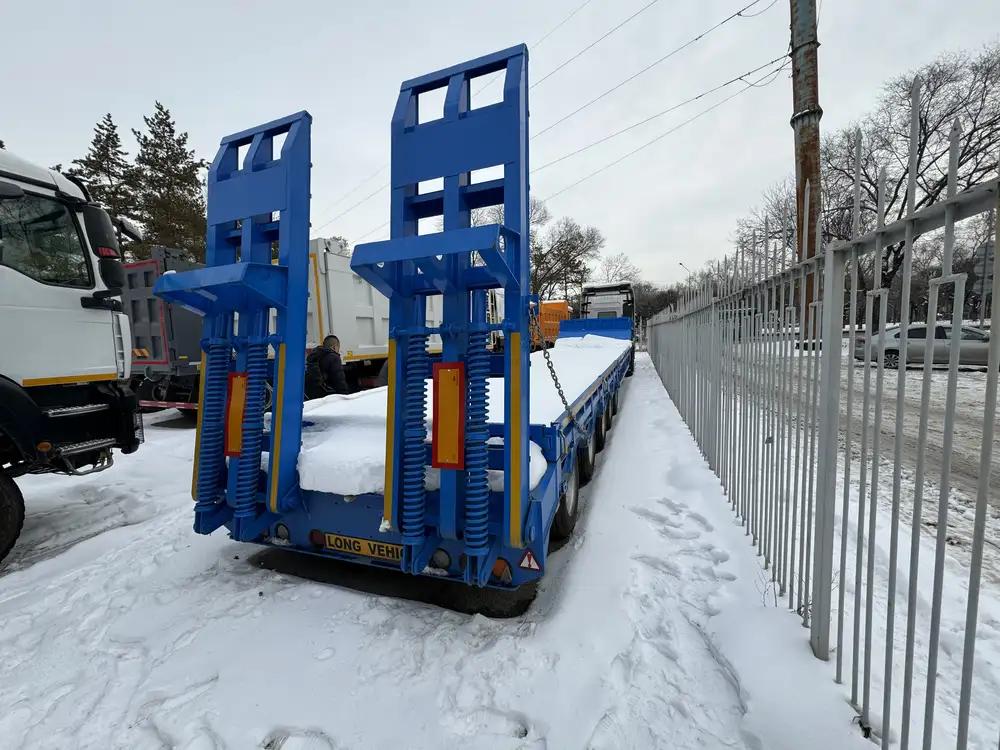In the world of logistics and transportation, tanker trucks play a pivotal role in the efficient movement of liquids across various industries. Whether it’s fuel, chemicals, water, or food-grade products, understanding the capacity of a tanker truck is essential for businesses aiming to optimize their supply chain operations. At CarMax Vehicle, we specialize in manufacturing high-quality semi-trailers, including tanker trucks designed to meet diverse capacity requirements. This comprehensive guide delves into the intricacies of tanker truck capacities, answering the critical question: how many liters are in a tanker truck?
Table of Contents
- Introduction to Tanker Trucks
- Standard Capacities of Tanker Trucks
- Factors Influencing Tanker Truck Capacity
- Types of Tanker Trucks and Their Capacities
- Comparative Analysis: Liter Capacity vs. Other Measures
- Regulatory Standards and Capacity Limits
- Optimizing Tanker Truck Capacity for Efficiency
- Maintenance and Capacity Preservation
- Choosing the Right Tanker Truck for Your Needs
- CarMax Vehicle: Your Partner in Tanker Truck Solutions
- Frequently Asked Questions
Introduction to Tanker Trucks
Tanker trucks are specialized vehicles designed to transport liquid and gaseous commodities. Unlike standard flatbed or enclosed trailers, tanker trucks feature a cylindrical tank mounted securely on the chassis, optimized for the safe and efficient movement of bulk liquids. The capacity of these tanks is a critical parameter, influencing not only the volume of goods transported but also compliance with regulatory standards and overall operational costs.
At CarMax Vehicle, we understand the nuances of tanker truck design and capacity. Our expertise ensures that each tanker truck we produce meets the highest standards of safety, durability, and efficiency, tailored to meet the specific needs of our clients.

Standard Capacities of Tanker Trucks
Tanker truck capacities vary widely based on design, intended use, and regulatory constraints. However, there are standard capacity ranges commonly observed in the industry:
| Tanker Type | Capacity Range (Liters) |
|---|---|
| Fuel Tankers | 8,000 – 40,000 |
| Chemical Tankers | 5,000 – 30,000 |
| Water Tankers | 3,000 – 20,000 |
| Food-Grade Tankers | 2,500 – 15,000 |
These ranges provide a general framework, but specific capacities can vary based on the aforementioned factors such as tank design, vehicle chassis, and intended application.
Factors Influencing Tanker Truck Capacity
Several key factors determine the liter capacity of a tanker truck:
1. Tank Dimensions
The physical size of the tank, including its length, diameter, and overall volume, directly impacts capacity. Longer and wider tanks naturally accommodate more liquid.

2. Material of Construction
The materials used in tank construction can affect the usable volume. For example, stainless steel tanks may allow for higher storage capacities in certain applications due to their structural integrity.
3. Regulatory Compliance
Government regulations often dictate maximum capacity limits for tanker trucks to ensure safety on the roads. These regulations can vary by region and by the type of liquid being transported.
4. Chassis Specifications
The chassis of the tanker truck must support the weight of the liquid. Heavier liquids require stronger chassis and suspension systems, which can influence overall capacity.

5. Intended Use
Different industries have varying requirements. For instance, fuel transportation necessitates adherence to stringent safety standards, potentially affecting tank design and capacity.
6. Distribution Network
Operating within urban areas may require smaller capacity tanks to navigate narrow streets and comply with emission standards, while long-haul routes might benefit from larger capacities to maximize efficiency.
Types of Tanker Trucks and Their Capacities
Tanker trucks are categorized based on the type of liquid they transport and their specific design features. Below is an overview of the primary types and their typical capacities:

Fuel Tankers
Fuel tankers are designed to transport gasoline, diesel, and other petroleum products. They generally have high-capacity tanks, with typical volumes ranging from 8,000 to 40,000 liters. These tanks are constructed with materials resistant to corrosive fuels and equipped with safety features such as leak detection systems.
Chemical Tankers
Transporting chemicals requires specialized tanker trucks that prevent contamination and withstand the corrosive nature of certain substances. Capacities for chemical tankers typically range from 5,000 to 30,000 liters, depending on the chemical’s properties and the necessary safety measures.
Water Tankers
Used for delivering potable water, water supply, or emergency water services, water tankers usually have capacities between 3,000 and 20,000 liters. These tanks are designed to meet hygiene standards to prevent contamination.

Food-Grade Tankers
Transporting food products like milk, wine, or edible oils demands adherence to strict hygiene standards. Food-grade tanker trucks have capacities ranging from 2,500 to 15,000 liters and feature stainless steel tanks with smooth interiors to prevent bacterial growth.
Comparative Analysis: Liter Capacity vs. Other Measures
While liters are a common measure of liquid capacity, tanker capacities can also be expressed in gallons or cubic meters. Understanding these conversions is essential for international logistics.
| Unit | 1 Liter | 1 Gallon (US) | 1 Gallon (UK) | 1 Cubic Meter |
|---|---|---|---|---|
| Equivalent to | 1 L | 0.2642 L | 0.2199 L | 1,000 L |
For instance, a 20,000-liter tanker truck equates to approximately 5,283 gallons (US) or 4,499 gallons (UK). Converting capacities ensures clarity in multinational operations and regulatory compliance.
Regulatory Standards and Capacity Limits
Tanker truck capacities are subject to stringent regulations to ensure road safety and environmental protection. Key regulatory bodies and standards include:

1. Department of Transportation (DOT)
In the United States, the DOT sets maximum capacity limits based on vehicle weight, tank dimensions, and road safety requirements. These regulations vary by state and are enforced to prevent overloading and ensure safe transportation.
2. European Union Regulations
EU regulations dictate maximum tank capacities, manifold designs, and safety features for tanker trucks operating within member states. These standards aim to harmonize transportation practices across Europe.
3. International Maritime Organization (IMO)
For tanker trucks involved in intermodal transport, IMO guidelines may apply, particularly concerning environmental standards and hazardous material handling.

4. Local and Regional Laws
Beyond national and international standards, local jurisdictions may impose additional capacity restrictions or safety requirements based on specific environmental or infrastructural considerations.
Compliance with these regulations is non-negotiable, as violations can result in hefty fines, vehicle impoundment, and reputational damage.
Optimizing Tanker Truck Capacity for Efficiency
Maximizing the efficiency of tanker truck operations involves balancing capacity with operational constraints. Here are strategies to optimize capacity:
1. Modular Tank Designs
Implementing modular designs allows for flexibility in capacity, enabling adjustments based on specific transportation needs without significant redesigns.

2. Advanced Materials
Using lightweight, high-strength materials can increase capacity without surpassing weight limits. Innovations in tank construction materials contribute to more efficient designs.
3. Aerodynamic Enhancements
Improving the aerodynamics of tanker trucks reduces fuel consumption, making higher capacity loads more economically viable by minimizing per-liter transportation costs.
4. Smart Loading Systems
Integrating smart loading systems ensures optimal tank utilization, reducing the likelihood of underfilled trips and enhancing overall efficiency.

5. Route Optimization Software
Employing advanced software for route planning ensures that tanker trucks operate on paths that accommodate their size and capacity, minimizing delays and maximizing load efficiency.
Maintenance and Capacity Preservation
Proper maintenance is crucial for preserving the liter capacity and overall functionality of tanker trucks. Key maintenance practices include:
1. Regular Inspections
Frequent inspections detect potential issues such as tank corrosion, valve leaks, or structural weaknesses that can compromise capacity and safety.

2. Cleaning Protocols
For tanker trucks transporting different types of liquids, thorough cleaning between loads prevents cross-contamination and maintains the integrity of liquid capacity.
3. Pump and Valve Maintenance
Ensuring that all pumping and valve systems are in optimal condition prevents leaks and ensures accurate capacity readings during loading and unloading.
4. Structural Reinforcements
Over time, the structural integrity of the tank may degrade. Reinforcing structural components maintains the tank’s capacity and prolongs its lifespan.

Choosing the Right Tanker Truck for Your Needs
Selecting an appropriate tanker truck capacity involves assessing your specific transportation requirements:
| Consideration | Factors to Evaluate |
|---|---|
| Type of Liquid | Viscosity, corrosiveness, regulatory classification |
| Distance and Routes | Terrain, road regulations, fuel efficiency requirements |
| Volume Requirements | Average and peak transportation volumes |
| Weight Constraints | Maximum allowable vehicle weight on intended routes |
| Operational Flexibility | Need for varying capacities or specialized loading/unloading systems |
By evaluating these factors, you can determine the optimal liter capacity that balances efficiency, compliance, and operational costs.
CarMax Vehicle: Your Partner in Tanker Truck Solutions
At CarMax Vehicle, we pride ourselves on delivering state-of-the-art tanker truck solutions tailored to diverse industrial needs. Our commitment to quality, innovation, and customer satisfaction ensures that our clients receive vehicles that not only meet but exceed their capacity and performance expectations.
Why Choose CarMax Vehicle?
- Customizable Designs: We offer bespoke tanker truck designs that cater to specific capacity requirements and operational demands.
- Advanced Engineering: Our engineering team employs the latest technologies to enhance tank efficiency, safety, and durability.
- Quality Assurance: Rigorous testing and quality control processes guarantee that every tanker truck meets industry standards and client specifications.
- After-Sales Support: Comprehensive maintenance services and support ensure that your tanker trucks remain operational and efficient throughout their lifecycle.
- Sustainability Focus: We incorporate eco-friendly materials and designs to minimize environmental impact without compromising on capacity or performance.

Frequently Asked Questions
1. What factors determine the maximum capacity of a tanker truck?
The maximum capacity of a tanker truck is influenced by tank dimensions, material of construction, regulatory compliance, chassis specifications, and the intended use of the truck. Additionally, operational factors such as route requirements and load distribution play a significant role.
2. How does tank design affect a tanker truck’s capacity?
Tank design, including its shape, length, diameter, and material, directly impacts the volume it can hold. Efficient designs maximize usable space while ensuring structural integrity and compliance with safety standards.

3. Are there different capacity standards for tanker trucks in different countries?
Yes, capacity standards for tanker trucks vary by country and region. Regulatory bodies such as the Department of Transportation in the U.S. and the European Union have specific guidelines that dictate maximum capacities and safety features for tanker trucks.
4. Can tanker truck capacities be adjusted after manufacturing?
While standardized tank sizes are common, some aspects of tanker truck capacity can be modified through custom designs or retrofitting. However, any adjustments must comply with relevant safety and regulatory standards to ensure the vehicle remains roadworthy.
5. What maintenance practices are essential for preserving a tanker truck’s capacity?
Essential maintenance practices include regular inspections for leaks and corrosion, thorough cleaning between loads, maintenance of pumping and valve systems, and structural reinforcements as needed. These practices help preserve the tank’s integrity and capacity over time.
For more information on our range of tanker trucks and to find the perfect fit for your transportation needs, contact CarMax Vehicle today. Let us help you enhance your logistical operations with our top-tier semi-trailer solutions.



